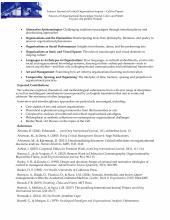Hermán García; Marc Pruyn
|
Richard Badham; Karin Garrety
|
Yue Cai-Hillon; Mark Hillon; David M. Boje
|
Steffen Roth
|
Kenneth Mølbjerg Jørgensen; Anja Overgaard Thomassen
|
Ann Starbæk Bager
Wyświetleń2805 Pobrań1094
|
Zrinka Mendas
|
Rohny Saylors; David M. Boje; Thomas J. Mueller
Wyświetleń3205 Pobrań1044
|





